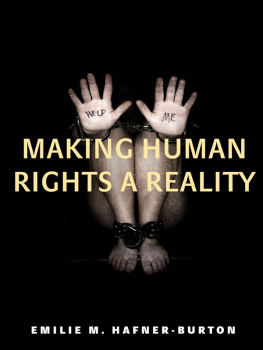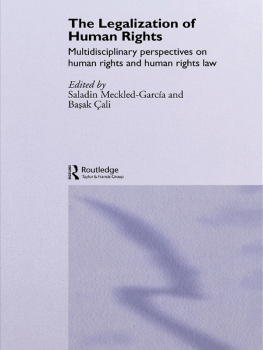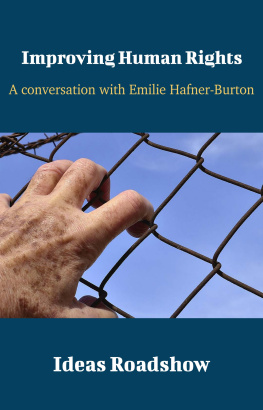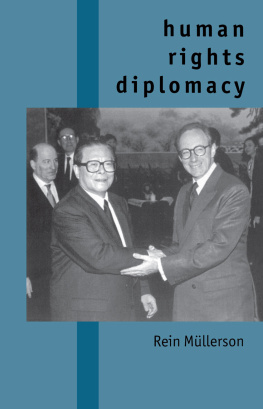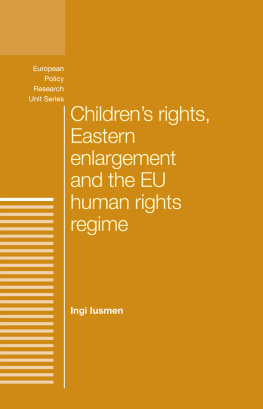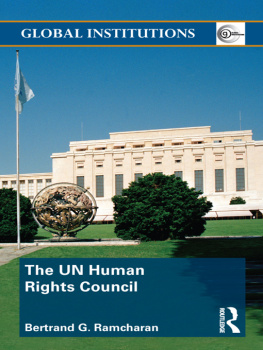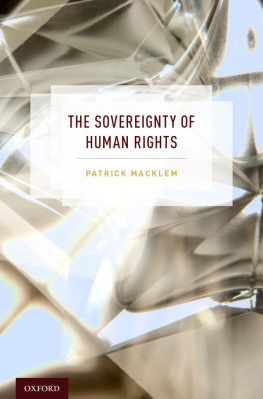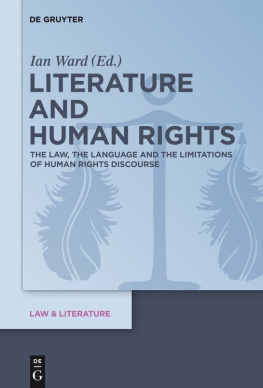
Making Human Rights a Reality
Making Human Rights a Reality
Emilie M. Hafner-Burton
PRINCETON UNIVERSITY PRESS
Princeton and Oxford
Copyright 2013 by Princeton University Press
Requests for permission to reproduce material from this work should be sent to Permissions, Princeton University Press
Published by Princeton University Press, 41 William Street, Princeton, New Jersey 08540
In the United Kingdom: Princeton University Press, 6 Oxford Street, Woodstock, Oxfordshire OX20 1TW
press.princeton.edu
All Rights Reserved
Library of Congress Cataloging-in-Publication Data
Hafner-Burton, Emilie.
Making human rights a reality / Emilie M. Hafner-Burton.
pages cm
Includes index.
ISBN 978-0-691-15535-7 (hardcover : alk. paper) ISBN 978-0-691-15536-4 (pbk. : alk. paper) 1. Human rights. I. Title.
JC571.H25 2013
323dc23
2012041049
British Library Cataloging-in-Publication Data is available
This book has been composed in Sabon.
Printed on acid-free paper.
Printed in the United States of America
10 9 8 7 6 5 4 3 2 1
For Eero and Apple
Contents
Preface
Two decades ago, I worked in the blacksmithing industry. I had a college degree under my beltwith concentrations in political science, philosophy, and womens studies. And I was apprenticing with artists who taught me the trade of blacksmithing. Then I took a hiatus that changed my life.
I won a fellowship, moved to Geneva, Switzerland, and started working for an international nongovernmental organization dedicated to the promotion of human rights and disarmament. That job, and another that followed, put me inside the United Nations. There, I experienced first-hand how international laws are made and managed through a sprawling bureaucracy involving differentoften-mismatchedinterests, competences, and intentions. I witnessed the potential of international cooperation. I also witnessed the power of governments and individuals to stymie it. I saw the hair-pulling frustrations of paperwork, official procedures, red tape, and ceaseless committee meetings. And I saw the powerlessness of many advocacy organizations to have much direct impact on this system. I left. I am still grateful for this experience, which set me on the path Im on today and motivated this book.
Now I am a political scientist, university professor, and codirector of the Laboratory on International Law and Regulation. Our mission at this laboratory is social science research to explore when and why international laws actually work. We aim to craft more effective solutions to global problems, such as the persistence of human rights violations that contribute to the suffering of millions of people. I write and teach courses on international law, human rights, political economy, public policy, and other topics.
This book has been many years in the making. Its based on a great deal of researchsome that Ive conducted, and much more by other scholars in a lot of fields, including anthropology, criminology, history, law, political science, psychology, and sociology. It represents my thinking after nearly two decades of experience and investigation about the problem of human rights as well as the efficacy of the international legal and foreign policy systems created in response.
One reason its taken so long to write this book is that Ive come to realize that human rights scholarship cant fit neatly into any single field. Research (including my own) that concerns human rights tends to be specialized, focused on the debates and methods that are germane to a particular academic discipline. Thats understandable because its impossible to be an expert in all subjects. But its also a hurdle to understanding the problem of human rights and crafting solutions, which dont fit neatly in our academic boxes.
I built my case in this book from the field I know best: political science. But each step in my argument led me to new fields of scholarship. I needed to learn more about the psychology and the behavior of perpetrators, the laws weve created to rein them in and how they actually work, and foreign policy and institutional reform. Those needs led me to discover entire literatures that Id never encountered before. After years of search and discovery, Im still an interloper in these other fields; no doubt experts in these other fields will see many gaps in my impressions. But that is the nature of interdisciplinary scholarship on real world problems. Along the way, Ive learned a lot about human rights; each new discipline and literature has taught me something invaluable.
The other reason its taken so long to publish this book is that my arguments do not sit comfortably with many peopleespecially people on the front lines of protecting human rightsand thats made me uncomfortable. My goal is to convey a vision for how to reduce human suffering. As I pursued that aim, I wanted to be as careful and courteous to my critics as I could. Ive taken their concerns seriously while remaining steadfast to my own evolving convictions.
Some characterize me as too pessimistic, and believe that Im mistaken in my depictions of how the international legal system is malfunctioning. Many of these critics are lawyers, and they see more effect of international law than I think the evidence merits. Others, though, portray me as too optimistic, and are critical of the argument I will make: that a few governments (what I call stewards) have the power to advance human rights around the world. Those stewards, I suggest, can also play a pivotal role in making international human rights law more effective. I see myself walking a fine line between these impressions: I am both profoundly skeptical about the global reach of the law to protect human rights and optimistic about a future where law, in tandem with state power, could advance human rights. I surely wont convince all my critics, though Ive made sincere efforts to deliberate over their apprehensions. Finding that balance has taken a long time and taught me a lot.
I wrote this book for a broad audience. It includes scholars (and their students) from many disciplines as well as policymakers, human rights promoters, and others who are interested in human rights, international law, or state power. For clarity and simplicity, I have relegated most of the details that are such an essential part of serious scholarship to the notes.
Of course, I did not create this book alone. It draws from over a dozen articles (and another book) that Ive written over the past decade. I had a tremendous amount of help all along the way, from people involved years ago in my dissertation research, to my colleagues and mentors since, many commentators and critics in the scholarly and practitioner communities that have weighed in on my work, and an army of fabulous research assistants, contributors, and collaborators. Im especially grateful to David Cingranelli, Wade Cole, Peter Cowhey, Christian Davenport, Dan Drezner, Lynn Eden, James Fearon, Martha Finnemore, Charles Franklin, Stephanie Giry, Oona Hathaway, Darren Hawkins, Stephan Haggard, Roger Hayden, Susan Hyde, Miles Kahler, Robert Keohane, David Lake, Edward Mansfield, Lisa Martin, Walter Mattli, John Meyer, Helen Milner, Cindy Milstein, Christine Min Wotipka, Alex Montgomery, Andrew Moravcsik, Eric Neumayer, Jon Pevehouse, Stephen Poe, Mark Pollack, Tonya Putnam, Francisco Ramirez, Kal Raustiala, James Ron, Peter Rosendorff, Kenneth Roth, Kathryn Sikkink, Beth Simmons, Anne-Marie Slaughter, Jeffrey Staton, Oskar N. T. Thoms, Kiyoteru Tsutsui, Leslie Vinjamuri, Erik Voeten, Jana von Stein, and James Vreeland for their input on my work at various stages. I appreciate all their support, including the criticisms Ive received.
Next page
